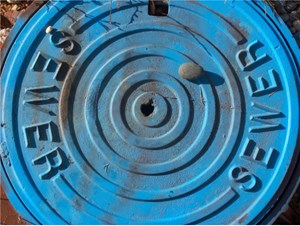FEMA allocates $22.6 million to Puerto Rico sewer authority to restore water infrastructure following Hurricane Maria
(UI) – The Federal Emergency Management Agency (FEMA) allocated nearly $22.6 million to the Puerto Rico Aqueduct and Sewer Authority (PRASA) for two projects that will restore the island’s water infrastructure from damage following Hurricane María.

One of PRASA’s projects to replace water pipes in the metropolitan region will benefit about 4,900 families, located in the Loíza Valley community of Canóvanas; in the Villa Fontana community of Carolina; in the Country Club community and Juan Ponce de León Avenue area in San Juan; and in the Amelia neighborhood in Guaynabo.
The infrastructure suffered significant damage due to erosion, flooding and other effects of the hurricane. Some of this damage includes continuous leaks due to deterioration and high-water pressure because of hydraulic issues.
This first phase of the project, with an allocation of nearly $10.1 million, involves the installation of new PVC pipelines and interconnection with existing systems. Additionally, hydrants will be replaced and service connection improvements will be carried out.
PRASA’s Executive President Doriel Pagán Crespo said that “this project is extremely important for the Metro Region. The replacement and renovation of pipes in the area will reduce water losses due to leaks. This, in turn, will result in a more stable service for subscribers and a more accurate reading for the billing process. With projects like this, we continue to strengthen the Authority’s infrastructure.”
Moreover, PRASA also has a federal allocation to repair the raw water treatment plant in the Jagüeyes community of Villalba. This facility receives raw water from the community through drains and sewer pipes. The project, with a federal investment of over $12.5 million, will increase the plant’s capacity.
Structural and mechanical improvements at the plant will benefit approximately 2,400 customers. A new structure will be built to include the electrical and mechanical systems; among them, the control room, a laboratory and a new filter operating area. The roof of the existing building will also be treated to repair cracks.
The executive director of the Central Office for Recovery, Reconstruction and Resiliency (COR3), Manuel A. Laboy Rivera, said, “The Aqueduct and Sewer Authority has stood out as one of the most proactive subrecipients. To date, the corporation has managed to complete 113 projects with an allocation of $58 million. In addition to this, another 131 projects are in the reconstruction stage with obligations exceeding $1.4 billion. The agency has also received approximately $340 million from FEMA’s Working Capital Advance (WCA) pilot program, which advances funds to support ongoing operations and recovery efforts.”
Related News
From Archive

- Glenfarne Alaska LNG targets late-2026 construction start for 807-mile pipeline project
- U.S. water reuse boom to fuel $47 billion in infrastructure spending through 2035
- $2.3 billion approved to construct 236-mile Texas-to-Gulf gas pipeline
- Major water pipe break in Puerto Rico hits over 165,000 customers
- Potomac River Tunnel project enters construction phase beneath Washington, D.C.
- Pennsylvania American Water launches interactive map to identify, replace lead water service lines
- Trump's tariffs drive $33 million cost increase for Cincinnati sewer project
- Utah city launches historic $70 million tunnel project using box jacking under active rail line
- Tulsa residents warned after sewer lines damaged by boring work
- Fatal trench collapse halts sewer construction in Massachusetts; two workers hospitalized



Comments